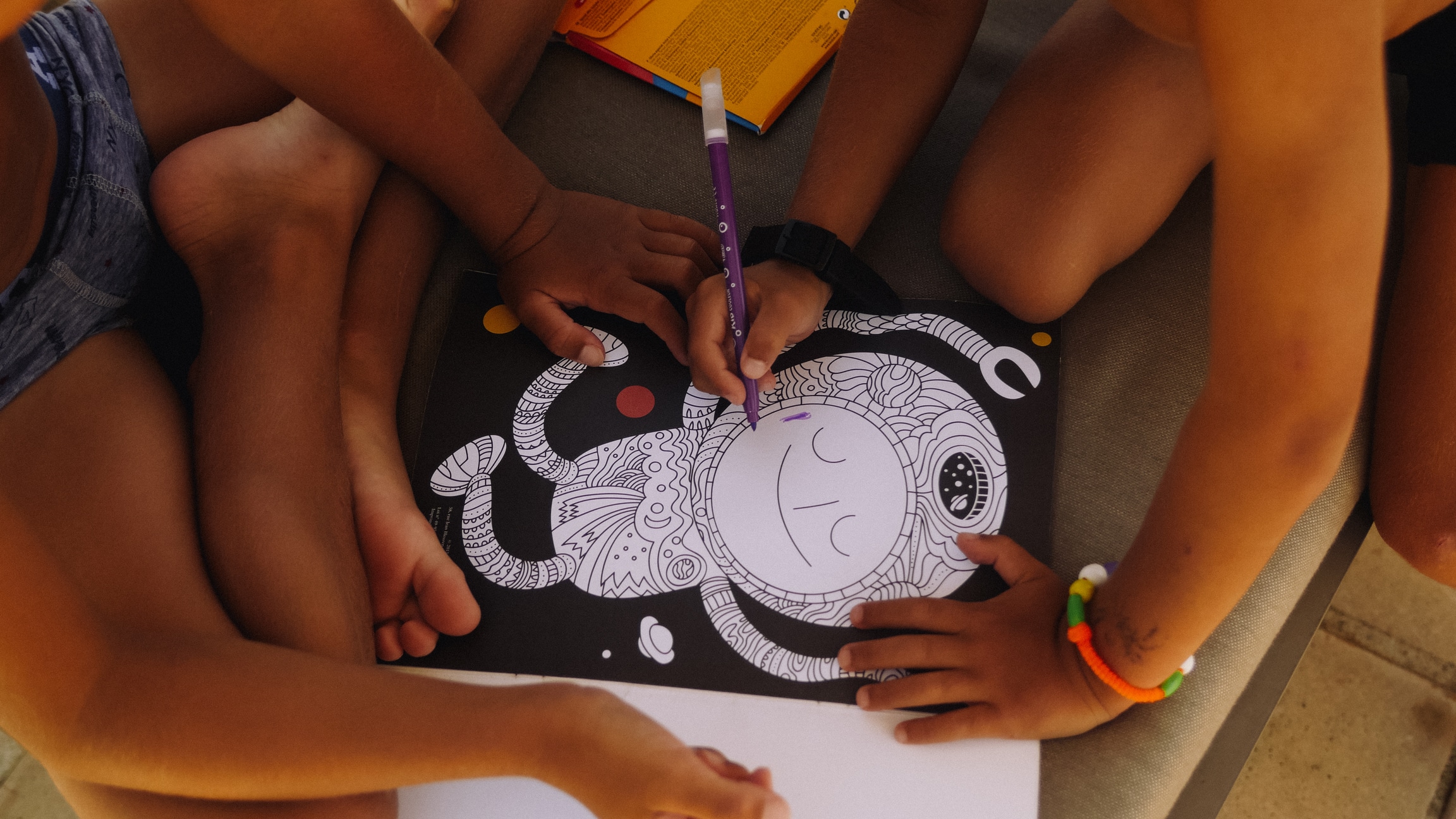You might have frequently heard about children with Sensory Processing Disorders (SPDs) or perhaps have one at home. It’s a condition where the brain has difficulty receiving and responding to information that comes through the senses. For children with SPD, time spent at the playground isn’t always as joyful or beneficial as it is for other kids. Challenges can surface when they struggle with sensory inputs like the feel of sand or the sound of other children playing. Thus, the need for a specialized, safe, and supportive play environment becomes crucial.
In this article, you’ll learn how to create a space where children with SPD can play, explore, and learn without feeling overwhelmed. An indoor play area equipped with the proper tools and toys can turn into a haven for sensory play that promotes their skills development.
Additional reading : What’s the Best Way to Convert a Closet into a Compact Home Recording Studio?
Understanding Sensory Processing Disorders
Before diving into the creation of an indoor play area, it’s important that you have a clear understanding of what SPD is. It’s a complex disorder of the brain that affects both children and adults. Commonly, these children experience difficulty in processing and acting upon information received through the senses, which creates challenges in performing countless everyday tasks. This can lead to motor clumsiness, behavioral problems, anxiety, depression, or other impacts on the child’s life.
Understanding the unique sensory needs of a child with SPD will help tailor an indoor play environment that suits them best. Not all sensory experiences are problematic for these children, some might be distressing while others can be calming or even enjoyable.
This might interest you : What’s the Best Approach to a Home Office with a Hidden Bed for Guests?
Selecting the Right Equipment and Toys
The right toys and equipment can go a long way in creating a beneficial play area. The aim is to provide sensory input that the child finds challenging in a controlled environment. This promotes their skills in processing these inputs and aids in their overall development.
Items such as swings, tunnels, and trampolines are great for providing vestibular input and helping develop balance and coordination. Textured toys and play dough can also be included for tactile sensory play. Building blocks, puzzles, and bead mazes can benefit fine motor skills and cognitive development.
However, always remember to choose toys and equipment that are suitable for your child’s age and ability. Additionally, safety should be your top priority when selecting these items.
Designing the Space
The design of the space plays a pivotal role in how well the child can interact with it. The room should be a calming, organized space that provides just the right amount of sensory stimulation. A cluttered room may overwhelm a child with SPD, while a minimalist space may not provide enough input for their needs.
A soft rug or carpet can provide a comfortable, sensory-friendly surface for play. Soft cushions, bean bags, or a small tent can provide a safe retreat for the child if they feel overwhelmed. Elements like sound-proofing and soft lighting can be considered to control audio-visual stimulation. Sufficient storage for toys and equipment will also help keep the room organized and manageable.
Implementing Sensory Play Activities
Once the room and equipment are ready, it’s time to implement sensory play activities. These activities should be engaging, fun, and most importantly, beneficial for the child’s sensory processing skills.
Play activities that engage various senses simultaneously can be very beneficial. For example, a sandbox (or a safer, indoor alternative like a rice bin) can engage a child’s sense of touch, sight, and even smell. Similarly, art and craft activities engage vision, touch, fine motor skills, and sometimes even sound and smell.
Remember, the goal is not to overwhelm the child, but to offer them controlled exposure to sensory input. All activities should be supervised to ensure safety, and the child should be allowed to stop if they feel uncomfortable.
Encouraging the Child to use the Play Area
You’ve designed the room, selected the right equipment and toys, and planned engaging activities. Now, it’s important to encourage the child to use the space. It can be tempting to rush into it, but for a child with SPD, it’s important to introduce new spaces and activities gradually.
You can start by letting them explore the room on their own terms, perhaps initially with a favorite toy or activity. Offer gentle encouragement, but don’t force participation. Gradually introduce new toys or activities as they become comfortable. Celebrate small successes to boost their confidence. Over time, the child will become more comfortable and confident in their new play area, and you’ll see the benefits of your hard work in their progress.
Utilizing the Sensory Room
Having successfully designed the sensory space, it’s time to maximize its use. A sensory room offers both creative and therapeutic benefits for children with sensory processing disorders. These can range from calming effects, to developing social skills and promoting sensory integration.
Start your child’s sensory room experience with activities that they are already comfortable with. This could be a sensory box filled with rice, or a soft play area with tactile toys. Encourage the child to explore the space at their own pace, and introduce new elements gradually.
A vital component of any sensory room is the availability of proprioceptive input. This refers to the sensations from joints, muscles and connective tissues that lead to the sense of relative position of the neighboring parts of the body. A well-equipped sensory room should have play equipment like weighted blankets, resistance bands, or therapy balls to offer proprioceptive input. However, keep in mind the child’s comfort and preferences when introducing these elements.
Make the sensory room a shared space, where you can also interact with the child. This could involve reading a book together on a soft play mat, or jointly engaging in a sensory play activity. Such interactions not only make the child more comfortable in the new environment, but also provide opportunities for you to observe and understand their sensory preferences.
Remember, patience is key. Encourage, but do not rush the child. The ultimate goal should be the child’s comfort and gradual acclimatization to various sensory inputs, rather than immediate results.
Reflection and Future Improvements
After the initial setup and use of the indoor play area, it’s important to reflect on its effectiveness and plan for future improvements. Is the child engaging with the playground equipment? Are they enjoying their time in the sensory space? Has there been any progress in their sensory integration or handling of sensory input? Your observations during the child’s playtime can provide valuable insights.
If you find certain play equipment is not being used, try to understand why. It could be too challenging, not engaging enough, or perhaps the child isn’t yet comfortable with it. Regularly rotate the toys and equipment based on the child’s preferences and progress.
Children with sensory processing disorder, including those with autism, can greatly benefit from a well-designed indoor play area. However, the journey doesn’t stop with the creation of the play space. It’s a continuous process of learning, adapting, and improving to best suit the child’s needs.
It is essential to remember that every child is unique, and what works for one might not work for another. Be patient, stay observant, and be ready to adapt. With time, patience, and the right approach, your indoor play area can become a nurturing space for your child’s development and growth.
In conclusion, creating an indoor play area for kids with sensory processing disorders involves understanding the disorder, selecting the right equipment and toys, designing the space, implementing sensory play activities, encouraging the child to use the play area, utilizing the sensory room and planning for future enhancements. It’s a labor of love that can greatly contribute to the child’s sensory integration, motor skills development, and overall well-being.











